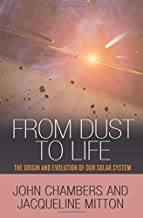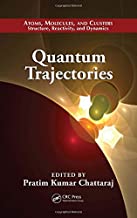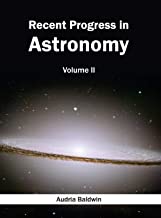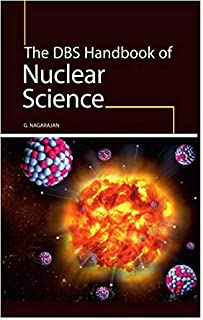From Dust to Life – The Origin and Evolution of Our Solar System (Printed Price)
Original price was: ₹2,312.14.₹1,849.71Current price is: ₹1,849.71.
ISBN: 9780691145228
Author/Editor: Chambers
Publisher: Princeton University Press
Year: 2016
1 in stock (can be backordered)
Description
The birth and evolution of our solar system is a tantalizing mystery that may one day provide answers to the question of human origins. This book tells the remarkable story of how the celestial objects that make up the solar system arose from common beginnings billions of years ago, and how scientists and philosophers have sought to unravel this mystery down through the centuries, piecing together the clues that enabled them to deduce the solar system’s layout, its age, and the most likely way it formed. Drawing on the history of astronomy and the latest findings in astrophysics and the planetary sciences, John Chambers and Jacqueline Mitton offer the most up-to-date and authoritative treatment of the subject available. They examine how the evolving universe set the stage for the appearance of our Sun, and how the nebulous cloud of gas and dust that accompanied the young Sun eventually became the planets, comets, moons, and asteroids that exist today. They explore how each of the planets acquired its unique characteristics, why some are rocky and others gaseous, and why one planet in particular–our Earth–provided an almost perfect haven for the emergence of life.
From Dust to Life is a must-read for anyone who desires to know more about how the solar system came to be. This enticing book takes readers to the very frontiers of modern research, engaging with the latest controversies and debates. It reveals how ongoing discoveries of far-distant extrasolar planets and planetary systems are transforming our understanding of our own solar system’s astonishing history and its possible fate.
Additional information
| Weight | 0.65 kg |
|---|
Product Properties
| Year of Publication | 2016 |
|---|---|
| Table of Contents | List of Illustrations xi Preface xv ONE Cosmic Archaeology 1 A fascination with the past 1 A solar system to explain 3 Real worlds 9 Winding back the clock 12 Putting the pieces together 16 TWO Discovering the Solar System 19 Measuring the solar system 19 From wandering gods to geometrical constructions 22 The Sun takes center stage 25 Laws and order 27 Gravity rules 29 The missing planet 31 Asteroids enter the scene 34 Rocks in space 36 Uranus behaving badly 37 Completing the inventory 40 THREE An Evolving Solar System 43 A changing world 43 A nebulous idea begins to take shape 44 The nebular hypothesis in trouble 48 A chance encounter? 50 Nebular theory resurrected 54 FOUR The Question of Timing 56 Reading the cosmic clock 57 Early estimates: ingenious--but wrong 57 Geology versus physics 58 Radioactivity changes everything 61 Hubble and the age of the universe 63 How radioactive timers work 64 Meteorites hold the key 68 Dating the Sun 71 The age of the universe revisited 73 FIVE Meteorites 75 A dramatic entrance 75 Where do meteorites come from? 76 Irons and stones 80 Identifying the parents 83 Lunar and Martian meteorites 86 A rare and precious resource 87 What meteorites can tell us 88 SIX Cosmic Chemistry 92 Element 43: first a puzzle then a clue 92 An abundance of elements 94 The first elements 96 Cooking in the stellar furnace 98 Building heavier elements 104 Supernovae 105 SEVEN A Star Is Born 108 A child of the Milky Way 108 Where stars are born 110 First steps to a solar system 113 The solar system's birth environment 119 Essential ingredients 121 EIGHT Nursery for Planets 123 An excess of infrared 123 Two kinds of disks 125 Inside the solar nebula 129 Getting the dust to stick 131 The influence of gas 134 How to build planetesimals 135 The demise of the disk 137 NINE Worlds of Rock and Metal 140 Sisters but not twins 140 The era of planetesimals 141 Planetary embryos take over 144 The final four 147 Earth 148 Mercury 153 Venus 158 Mars 161 TEN the Making of the Moon 168 The Moon today 169 What the Moon is made of 170 The Moon's orbit 172 The fission theory 174 The capture hypothesis 175 The coaccretion hypothesis 176 The giant impact hypothesis 177 Encounter with Theia 179 Earth, Moon, and tidal forces 181 Late heavy bombardment 183 ELEVEN Earth, Cradle of Life 186 The Hadean era 186 The tree of life 191 The building blocks of life 193 The rise of oxygen 196 A favorable climate 199 Snowball Earth 202 Future habitability 204 TWELVE Worlds of Gas and Ice 205 Giants of the solar system 205 Building giants by core accretion 211 The disk instability model 214 Spin and tilt 215 Masters of many moons 217 Formation of regular satellites 219 The origin of irregular satellites 220 Rings 221 THIRTEEN What Happened to the Asteroid Belt? 225 The asteroid belt today 225 Ground down by collisions? 226 Emptied by gravity? 229 Asteroid families 231 The missing mantle problem 233 Asteroids revealed as worlds 236 FOURTEEN The Outermost Solar System 242 Where do comets come from? 242 Centaurs 246 Looking beyond Neptune 247 The Kuiper belt 248 Sedna 251 The nature of trans-Neptunian objects 252 Where have all the Plutos gone? 256 The Nice model 259 FIFTEEN Epilogue: Paradigms, Problems, and Predictions 263 The paradigm: solar system evolution in a nutshell 264 Unsolved puzzles 267 Searching the solar system for answers 268 Other planetary systems 271 Future evolution of the solar system 273 Glossary 277 Sources and Further Reading 291 Index 293 |
| Author | Chambers |
| ISBN/ISSN | 9780691145228 |
| Binding | Hardback |
| Edition | 1 |
| Publisher | Princeton University Press |
You must be logged in to post a review.






Reviews
There are no reviews yet.